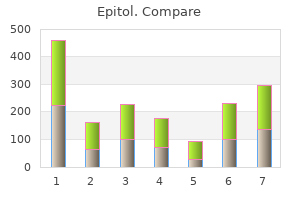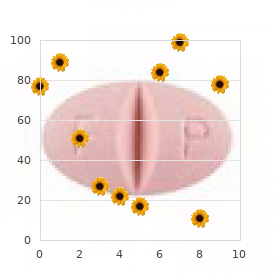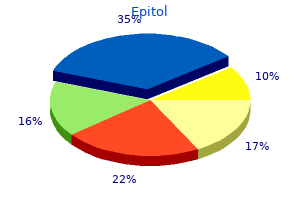"Generic 100 mg epitol fast delivery, symptoms by dpo".
By: R. Kapotth, M.B. B.CH. B.A.O., M.B.B.Ch., Ph.D.
Clinical Director, Ohio University Heritage College of Osteopathic Medicine
It encompasses most of the important physical aspects of daily function medicine 4h2 pill order epitol mastercard, but does not directly address impairment to communication symptoms you may be pregnant purchase 100 mg epitol, cognition treatment 100 blocked carotid artery order genuine epitol on line, or hearing and vision medicine for the people proven 100 mg epitol. Rasch analysis of the Barthel index in the assessment of hospitalized older patients after admission for an acute medical condition. A comparison of the Barthel Index and the Functional Independence Measure as outcome measures in stroke rehabilitation: patterns of disability scale usage in clinical trials. Rosvold demonstrated a topographical coupling between the prefrontal cortex and caudate nucleus (Rosvold, 1972; Johnson, Rosvold, & Mishkin, 1968). Considering the major outflow of the basal ganglia to the thalamus, it is not surprising that a substantial amount of research strongly supports the role of the basal ganglia in higher-order behavioral and cognitive tasks. Much of this research relies on striatal dopaminergic deficit and cortical lesion models in both human patients and animal models. The basal ganglia have been shown to regulate temporal coupling and ordering of both motor and nonmotor sequences (Malapani et al. Interestingly, a role in auditory rhythm detection and generation has been supported (Grahn & Brett, 2007, 2008); this is analogous to the well-established role of the basal ganglia in motor timing and pattern generation, making the circuitry a ``rhythmpattern generator' both in executive (motor) and perceptual (cognitive) realms. The implications of this and similar work for the perceptual and executive aspects of language are well-demonstrated (Kotz, Schwartze, & Schmidt-Kassow, 2009). The basal ganglia are involved in a number of other higher-order cognitive functions. For instance, problemsolving tasks that activate the prefrontal cortex also activate the basal ganglia. Recent research has shown that the basal ganglia are significantly involved in learning, including motor skill learning, sequence learning, habit learning, and category learning. In addition, the basal ganglia are involved in a number of other cognitive functions including working memory, attentional systems, and executive decision making and control. While many of the behaviors engaged in seem simple and are taken for granted, these daily behaviors are really patterns of highly organized behaviors with very specific goals and purposes. As tasks are learned and practiced, they become automated, and require little to no conscious control. The basal ganglia play a critical role in the smooth and efficient operation of such highly automated behavior, and as such are part of the complex ``executive' system of the brain. Thus, the basal ganglia play a critical in performing everyday practical tasks in an effortless and efficient manner (Koziol & Budding, 2009). The striatal complex is composed of the neostriatum (caudate and putamen) and ventral striatum (nucleus accumbens and olfactory tubercle) (Haines, 2004). Embryologically the same, the caudate and putamen are separated by the internal capsule. Striosomes and matrix constitute a chemical and functional separation of the striatal complex: striosomes are areas of low acetylcholinesterase and high neuropeptide content, whereas matrix regions are rich in acetylcholinesterase (Bernacer, Prensa, & Gimenez-Amaya, 2007). This difference in acetylcholinesterase content provides a convenient histochemical differentiation between neostriatal regions (DiFiglia, Pasik, & Pasik, 1976). These nuclei also receive substance-P and enkephalinergic input from the striatum (Menguala, de las Herasb, Erroa, Lanciegoa, & GimenezAmaya, 1999). Major excitatory input is found in glutamatergic projections from thalamus (centromedian and parafascicular nuclei) and cortex (several motor areas), as well as dopaminergic input from substantia nigra pars compacta (Kubota et al. The latter dopaminergic input terminates in both D1 and D2 dopamine receptor subtypes, an important determinant in excitation or inhibition of striatal neurons (Surmeier, Ding, Day, Wang, & Shen, 2007). The pars reticulata provides tonic inhibition of the thalamus, while the major function of the pars compacta is dopaminergic input to the striatum (Haines, 2002). The nucleus is bounded medially by the internal capsule, and laterally by the putamen (Haines, 2004). The internal segment tonically inhibits the ventroanterior and ventrolateral nuclei of the thalamus. The basal ganglia have been described in terms of functionally opposing direct and indirect pathways.
As part of his daily responsibilities medications when pregnant order epitol 100mg online, Gage performed manual labor using a tamping iron medicine under tongue buy epitol 100mg without prescription, which closely resembled a crowbar medications medicaid covers buy epitol with american express. In the mid-nineteenth century medications jaundice generic 100 mg epitol overnight delivery, tamping was a conventional technique used to obtain the greatest efficiency from a charge while blasting rocks for laying a railroad foundation. The process of tamping involved creating a hole, pouring sand into the hole, and subsequently pounding the tamping iron into the hole. Once the tamping iron was pounded into the hole, it packed a charge, generated a spark, and consequently ignited an explosive charge. Historical accounts indicate that Gage mistakenly dropped the tamping iron into the hole before one of his crewmen had poured the sand. Thus, as soon as the tamping iron hit the rock, a charge was ignited, and the tamping iron instantaneously reversed direction and shot upward. Some reports indicate that he spoke to his crewmen within a few minutes of the explosion and ambulated independently to the oxcart which transported him to town. Other sources relay that Gage required assistance from his crewmen to stand and maneuver himself to the oxcart. Harlow (1848) noted that immediately post-explosion Gage was ``perfectly conscious,' and his mind was ``clear' with no impairment of ``sensorial powers. Sources also state that Gage recognized his mother and uncle during their visit the morning after the accident. During his examination 3 days after the explosion, Harlow noted that Gage appeared restless and delirious. He also remarked that it was impossible for Gage to recover and that Gage ``shall not live long. Two months post-explosion, Harlow noted that Gage had become more impulsive and disinhibited, and his decision-making and problem-solving skills became impaired. He described Gage premorbidly as a hard-working, popular, and responsible young man; however, postaccident Gage was ity (which was not previously his custom), manifesting but little deference for his fellows, impatient of restraint or advice when it conflicts with his desires, at times pertinaciously obstinate, yet capricious and vacillating, devising many plans of future operation, which are no sooner arranged than they are abandoned in turn for others appearing more feasible (Harlow, 1868). Documentation describing Gage in terms of personality and behavior both pre- and postaccident is limited and, as such, open to discussion. Historically, Phineas Gage has become a classical example for prefrontal lobe pathology and disturbances in executive functions (Harlow, 1868). Since the mid-nineteenth century, the case of Phineas Gage has garnered much attention in the literature, prompted considerable speculation about frontal lobe function, and provided some confirmation for the localization theories. Various researchers continue to cogitate on the impact such penetrating injury had on various vulnerable brain regions. In 1848, Harlow believed that the brain damage was confined primarily to the anterior left lobe with accompanying diffuse damage. A myriad of factors contribute to this challenge: profuse hemorrhage, overflow of brain tissue pressing out of the skull, bone fragments infiltrating brain tissue, possible harm from a concussion, and further loss of brain tissue as a result of the infection. Ferrier (1878), an early proponent of cerebral localization theory, cited Gage as a primary example of how frontal lobe injury can result in personality changes undetectable on the sensory and motor exam. Although Phineas Gage was born the first of five children, limited information is available regarding his birth and early childhood. In terms of education, Harlow (1868) described Gage as ``untrained in schools' because of a lack of school documentation. Census data from 1840 and 1850 and found high levels of school attendance and high rates of literacy among Caucasian adults. Gage was employed by a firm of contractors who won the tender for preparing the foundation for the railway near Cavendish. Psychologically, Gage was described as having boundless energy and temperate habits pre-accident (Harlow, 1848). According to Macmillan (2008), Gage desired to return to work as a foreman after his physical recovery from the accident. Neylan (1999) believed Barnum hired Gage because he was an anomaly in that he walked immediately following the accident, communicated sensibly, and remained lucid for the majority of the aftermath. Gage also went to Chile with a man who planned to set up a stagecoach line (Harlow, 1868). After years driving stagecoaches, he returned to his family in San Francisco in 1859. Accounts indicate that he arrived in California in a weakened condition due to some illness he had contracted.
Generic epitol 100mg mastercard. Depression and Chronic Pain | Kati Morton.

Direct behavioral interventions include frequent reorientation of the patient treatment pneumonia purchase epitol 100mg free shipping, minimization of restraints medications names and uses order cheapest epitol and epitol, use of sensory aids (eyeglasses medicine 4h2 pill purchase 100 mg epitol with amex, hearing aids) simple exercises medications bad for kidneys purchase epitol line, and sleep hygiene protocols. Most of these behavioral strategies have limited support in the literature, and many have never been tested in the acute setting; however, they have anecdotal support, face validity, and are unlikely to harm the patient. There is some methodologically sound data to support behavioral interventions for the prevention of delirium in predisposed individuals (Inouye et al. Such treatment is usually initiated when the behavioral manifestations of delirium, particularly aggressive or violent behaviors, make it impractical or dangerous to wait for the natural improvement that will follow the successful treatment of the underlying precipitants. Most of the evidence for such treatment is anecdotal or derived from uncontrolled studies. Historically, the most common medications used in the acute setting were narcotics, benzodiazepines, and antipsychotics. Benzodiazepines are still commonly used, however should not be considered a ``first-line' medication given their capacity to confuse patients further. Although this side effect is sometimes labeled as a ``paradoxical' effect of the drug, it is in fact a common side effect of all sedative-hypnotic medications. Antipsychotics are most commonly used, both ``typical' antipsychotics such as haloperidol, and the ``atypical' agents such as risperidone, olanzapine, quetiapine, and newer agents. All antipsychotics seem to carry the benefit of having a calming effect without causing the level of sedation and confusion seen with benzodiazepines. Anecdotally, however, patients do seem less confused and psychotic after only a short term of antipsychotics; it may simply be that patients can organize their thoughts better once they are calmer. Many of the side effects that limit the use of antipsychotics, such as parkinsonian symptoms or tardive dyskinesia, are less relevant in the acute care setting. When using antipsychotics, once should watch for the rare but Delirium D 795 serious adverse effects that could occur, such as an acute dystonia, cardiac dysfunction, or the neuroleptic malignant syndrome; of these, the latter two are life threatening and require immediate discontinuation of the offending agent, close monitoring, and intense general medical support. Other side effects, such as akathisia can be difficult to distinguish from the agitation associated with delirium, but should be suspected in cases where the addition of an antipsychotic seems to make the patient more restless. Many antipsychotics are anticholinergic and thus can cause confusion, and the agents with a higher anticholinergic profile should be avoided; these included many of the lower potency antipsychotics such as chlorpromazine and thioridazine. Despite these concerns, in the majority of cases antipsychotics appear to be a safe and at least moderately effective approach. The debate on the appropriate risk and benefit balance continues, and specific data on the safety in elderly patients with delirium is lacking. Until more guidance is available, delirious patients who are elderly, or who have predisposing cardiac conditions should be monitored closely if an antipsychotic is used. The particular agent to choose is largely a clinical decision based on an assessment of likely side effects and any history of prior response to a particular drug. Both the American Psychiatric Association (1999) and the Society of Critical Care Medicine (Pandharipande, Jackson, & Ely, 2005) recommend the use of haloperidol for the treatment of delirium. Newer agents are likely to be helpful, but currently lack sufficient data to support any particular agent. Available routes of administration can be important in choosing an agent as well: haloperidol is available in a short-acting injectable formulation as is olanzapine; most of the other agents are not. Chlorpromazine Clock Drawing Dementia Dystonia Electroencephalography Haloperidol Metabolic Encephalopathy Mini-Mental State Exam Olanzapine Parkinsonism Quetiapine Risperidone Schizotypal Personality Disorder Tardive Dyskinesia Thioridazine Trail Making Test D References and Readings American Psychiatric Association (1999). The delirium experience: Delirium recall and delirium-related distress in hospitalized patients with cancer, their spouses/caregivers, and their nurses. Clarifying confusion: the confusion assessment method: a new method for detection of delirium. A multifactorial intervention program reduces the duration of delirium, length of hospitalization, and mortality in delirious patients. Validation of delirium rating scale revised-98: Comparison to the delirium rating scale and cognitive test for delirium. With the exception of the Wisconsin Card Sorting Test (Heaton, Chelune, Talley, Kay, & Curtiss, 1993), the majority of existing clinical measures of higher-level cognitive functions yield a single achievement score for each task.


Galton proposed that a large set of measurements of human traits could be meaningfully described and summarized using two numbers: the average value of the distribution (the mean) medicine stone music festival order epitol 100 mg otc, and the dispersion of scores around that average value (the standard deviation) treatment guidelines order epitol 100mg fast delivery. In addition symptoms ear infection purchase 100mg epitol fast delivery, Galton was a pioneer in the area of correlational methods treatment yellow jacket sting cheapest epitol, which are central to many modern techniques for investigating the reliability and validity of tests, as well as factor analytic techniques (Schultz & Schultz, 1992). Spearman also contributed greatly to the development of factor analytic techniques, which are central to intelligence test development and the representation of intelligence measures. Alfred Binet and Theodore Simon were commissioned by the Paris schools to develop a method for differentiating between children who were considered intellectually capable of benefiting from schooling and those who were intellectually challenged and who should receive special education programming. During that time, David Wechsler was assigned as a Military Psychologist conducting psychological examinations on individuals who had failed the army performance scale (Boake, 2002). These tests are now in their fourth revisions and widely used in modern intelligence testing. The first assumption was that what we call human capacities may be treated as physical or psychological qualities, and the second was that these qualities were capable of measurement (Wechsler, 1935). He concluded that there was need for an alternative test to the Binet test, and in particular, a test of intelligence most suitable for use with adults. Wechsler also believed that the ratio of mental age/ chronological age was inappropriate for adults because mental age did not increase at the same rate as chronological age in adulthood. The assessment of intelligence and cognitive processes, like all other latent traits that describe individual differences in human behavior, will continue to evolve. Intelligence and its measurement is one of the most important and well-studied areas in psychology and related disciplines. Scores between 70 and 80 indicate ``borderline' ability, and scores between 80 and 89 represent someone who is ``low average. Development of a general ability index for the Wechsler Adult Intelligence Scale-Third Edition. Damage to surrounding brain tissue is thus minimized and side effects tend to be fewer and less severe. Due to its high degree of specificity, it is often used for treatment of childhood tumors to minimize the impact of radiation on development. Cross References Early-Delayed Effects of Radiation Late-Delayed Effects of Radiation Late Effects of Radiation Radiation Oncology Radiotherapy Stereotactic Radiation Therapy References and Readings Boyer, A. In contrast, intent refers only to the state of mind (mens rea) with which the act is done or omitted. Because intent is a state of mind, it can rarely be proved with direct evidence and ordinarily must be inferred from the facts of the case. Evidence of intent is always admissible to prove a specific-intent crime, but evidence of motive is only admissible if it tends to help prove or negate the element of intent. Courts generally allow a wide range of direct and circumstantial evidence to be introduced at trial in order to prove the difficult element of criminal or torturous intent. In addition, the doctrine of presumed intent may be helpful in proving specific intent because it holds individuals accountable for all the natural and probable consequences of their acts. Criminal offenses requiring general intent specify a mens rea element that is no more than the negligent or reckless commission of the actus reus. The actor either knew (recklessness) or should have known (negligence) that his action (actus reus) would result in the harm suffered by the victim. Unlike offenses that require a specific intent, it is not necessary that the accused intended the precise harm or result. It is sufficient if the person meant to do the act that caused the harm or result. If a defendant commits a battery that results in harm to the victim, it does not matter if the defendant did not intend the harm. A range of words is used to represent shades of intention in the various criminal laws around the world. The most serious crime of murder, for example, traditionally expressed the mens rea element as malice aforethought. A person intends a consequence when he or she foresees that it will happen if the given series of acts or omissions continue and desires it to happen.


